Narrative about the experience of the floods in Pakistan
Dr. Amina Muazzam, GNPHR subscriber and Board Member of the ICP
 According to the World Bank statistics (2022), more than 2 million people in Pakistan are living below the poverty line. The current floods in Pakistan have caused devastation in the lives of most of these people. The flash floods swept across Pakistan with almost one-third of the country still submerged in water, resulting in the displacement of hundreds and thousands of people who were not prepared for this calamity altogether. Nearly 33 million people have been affected, according to the recent surveys and official reports from the Government of Pakistan. It was after a gap of twelve years that a flood of this magnanimity hit Pakistan, bringing to the front stories of agony. The last time a flood of large scale which came in Pakistan was in year 2010. Most of the people had forgotten that crisis and no strong preventive measures could be taken in this regard.
According to the World Bank statistics (2022), more than 2 million people in Pakistan are living below the poverty line. The current floods in Pakistan have caused devastation in the lives of most of these people. The flash floods swept across Pakistan with almost one-third of the country still submerged in water, resulting in the displacement of hundreds and thousands of people who were not prepared for this calamity altogether. Nearly 33 million people have been affected, according to the recent surveys and official reports from the Government of Pakistan. It was after a gap of twelve years that a flood of this magnanimity hit Pakistan, bringing to the front stories of agony. The last time a flood of large scale which came in Pakistan was in year 2010. Most of the people had forgotten that crisis and no strong preventive measures could be taken in this regard.
The flood came with such force that the warning systems failed to warn people in-time, which resulted in the deaths of more than one thousand people including children, adults and the elderly. The flood waters broke the river banks and swept across large parts of the country where floods were not reported earlier. Pakistan has the largest number of glaciers outside the polar regions, which are melting at rapid speed due to the climatic changes around the world. Because of the growing global warming massive melting of glaciers resulted in the North of Pakistan, adding to the flood waters and playing havoc in the lives of these people. The river side buildings crumbled down, the mud houses were swept away and their livestock drowned before they could move to some safer place. Land sliding occurred in many places and infrastructure was damaged badly. I am a frequent visitor of these Northern areas and see such beautiful landscape toppled by the flash floods was truly devastating.
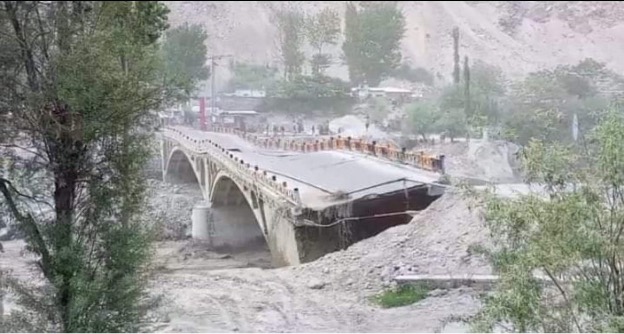

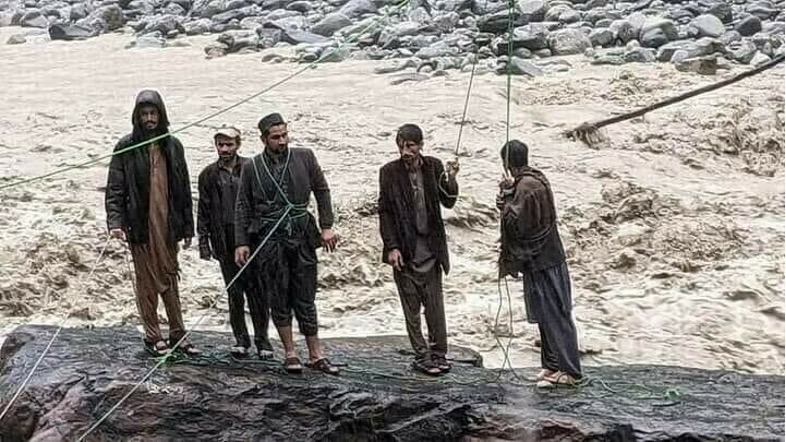 I was filled with grief and resentment when the story of five friends stranded on a big rock amidst the treacherous waves of flood came up on social media. The youngsters were trapped on a high rock in the middle of the stream and cried out for help. The locals tried desperately to rescue them with the help of ropes, but the water currents were too strong, and the stream was deeper than expected. They kept waiting for five hours for some aerial rescue as the water level rose, which eventually swept the youngsters away. Four of them died and only one could be rescued by the locals. The lack of appropriate resources and communication barriers lead to many such incidents where the poor and less privileged people could not be saved and rescued in-time.
I was filled with grief and resentment when the story of five friends stranded on a big rock amidst the treacherous waves of flood came up on social media. The youngsters were trapped on a high rock in the middle of the stream and cried out for help. The locals tried desperately to rescue them with the help of ropes, but the water currents were too strong, and the stream was deeper than expected. They kept waiting for five hours for some aerial rescue as the water level rose, which eventually swept the youngsters away. Four of them died and only one could be rescued by the locals. The lack of appropriate resources and communication barriers lead to many such incidents where the poor and less privileged people could not be saved and rescued in-time.
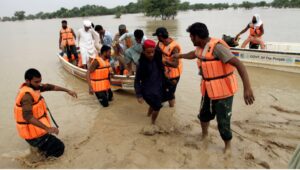 There was a loss of people’s lives and their livelihoods, people’s properties and their livestock, their fields and yields, their shades and shelters, their life-time savings and earnings. According to the rescue workers, many people refused to leave after the first wave of floods, saying that they would wait for these flood water to go down or for more rescue teams to reach so that they can leave with their cattle, but alas their hopes drowned and so did they as the flood conditions worsened and the water level rose higher.
There was a loss of people’s lives and their livelihoods, people’s properties and their livestock, their fields and yields, their shades and shelters, their life-time savings and earnings. According to the rescue workers, many people refused to leave after the first wave of floods, saying that they would wait for these flood water to go down or for more rescue teams to reach so that they can leave with their cattle, but alas their hopes drowned and so did they as the flood conditions worsened and the water level rose higher.
Millions were left homeless, without food, shelter and even clean water to drink. They were without food under the sky with no shelter from the harsh weather. Those who cultivated for the whole nation, and provided meat and poultry from the livestock, were without food of their own, dependent on help from others in the form of food, clothes and medicines, until they could go back to their areas and try to build their lives from anew. The sanitary conditions are poor in these areas. Basic life necessities like access to the clean drinking water is scarce causing different diseases like diarrhea, typhoid etc.
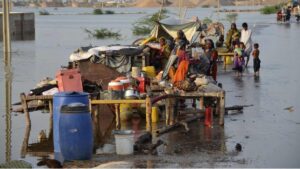 There is limited access to medicines and treatment, in these flood- affected areas as these are being provided by the rescue workers through boats or other aerial routes because most of the roads, bridges and railway tracks have been destroyed by the flood water. Also, mosquitoes and other insect and reptile bite cases have been reported. There are increasing cases of malaria and people are dying because of snake bites because they cannot be taken to the hospital. Its even difficult to bury the deceased because it was difficult to reach cemetery. Children have been affected physically, emotionally and socially as well. Many have lost their parents or siblings. They have been displaced and cannot go to schools or play around freely as the areas around are water lodged.
There is limited access to medicines and treatment, in these flood- affected areas as these are being provided by the rescue workers through boats or other aerial routes because most of the roads, bridges and railway tracks have been destroyed by the flood water. Also, mosquitoes and other insect and reptile bite cases have been reported. There are increasing cases of malaria and people are dying because of snake bites because they cannot be taken to the hospital. Its even difficult to bury the deceased because it was difficult to reach cemetery. Children have been affected physically, emotionally and socially as well. Many have lost their parents or siblings. They have been displaced and cannot go to schools or play around freely as the areas around are water lodged.
Lahore College for Women University (LCWU) in these difficult times initiated a drive to collect donations and relief goods for the people of our country. The students, faculty and alumni donated generously and food, drinking water, clothing, medicines, dry milk and diapers for children and other relief goods were collected and dispatched to the affected areas. In addition to the supplies, cash donations were also collected to help the flood victims.

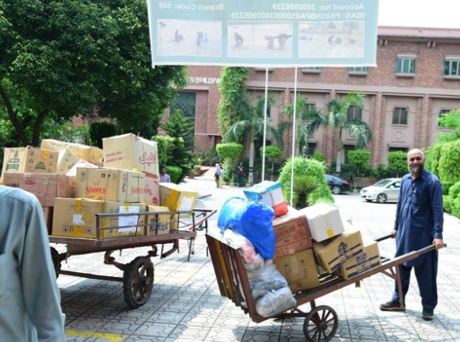
Difficult times come in the lives of the nations but leave their impact on the lives of the people. Nations around the world need to come together to fight these calamities and to reduce the factors resulting in climatic changes which cause global warming and promote the melting of glaciers. That is how we can make our planet a better place to live, with its people happier and healthier.
